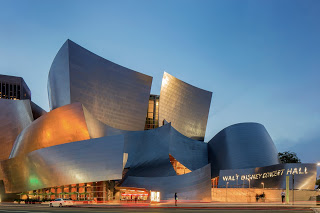 If you've ever worn glasses or need to wear them in order to be able to function, you've probably experienced the struggle of wanting to wear cool/funky frames but either not being able to find any, or worrying about being stuck to that one set every day. This week Fast Company, released an article discussing a new Company called 'Biz Eyes' that essentially has a 3D printer make different accessories that can be attached to a normal pair of glasses to 'funkify' them. ''it's a crazy, modular line of 3-D printed frames that can be easily mixed, matched, and swapped out, according to your mood.' The concept of Biz Eyes is to make it simple for the consumer to get as creative and funky with their eyewear, as they want. 'Biz Eyes are made of two parts: a sturdy, transparent base frame, in which your prescription lenses sit, and the spectacles faceplates themselves, which are 3-D printed out of custom dyed white nylon and resin.' I highly recommend that anyone interested in design and creative concepts check out this new idea. To me, it was very fascinating and has the potential to really gain traction within the global marketplace.
If you've ever worn glasses or need to wear them in order to be able to function, you've probably experienced the struggle of wanting to wear cool/funky frames but either not being able to find any, or worrying about being stuck to that one set every day. This week Fast Company, released an article discussing a new Company called 'Biz Eyes' that essentially has a 3D printer make different accessories that can be attached to a normal pair of glasses to 'funkify' them. ''it's a crazy, modular line of 3-D printed frames that can be easily mixed, matched, and swapped out, according to your mood.' The concept of Biz Eyes is to make it simple for the consumer to get as creative and funky with their eyewear, as they want. 'Biz Eyes are made of two parts: a sturdy, transparent base frame, in which your prescription lenses sit, and the spectacles faceplates themselves, which are 3-D printed out of custom dyed white nylon and resin.' I highly recommend that anyone interested in design and creative concepts check out this new idea. To me, it was very fascinating and has the potential to really gain traction within the global marketplace.
This week, Fast Company wrote an article describing the process that the brand of Filson has been undergoing in order to tell their story. 'Since 1897, the company has been outfitting the more rugged types of the Pacific Northwest, starting with gold miners, then forestry workers, and on to outdoorsmen of all stripes, including hunters, fishers, sports shooters and travelers. Over the last decade, the brand's territory has expanded to just about anywhere a guy can grow a beard'' Until recently, the Filson brand has gotten by utilizing very little marketing and rather relying more on word of mouth. Now, the company has hired Alex Carleton (Rogues Gallery, LL Bean Signature) as their new Creative Director along with Gray Madden (associated with Burberry Watches) being their new president. 'The plan is to use the legacy of the brand's long, storied history to chart its future.' The full article then goes into what key components will be used to make this campaign reach its full potential. I highly recommend looking over this article, if not to look into a unique brand design strategy, then to glean how this brand has reached such a wide consumer base without much marketing in the past.
 What do you see when you stumble upon a dollar bill laying around? Most people would respond by saying buying power. However, a recent article released by Fast Company explores the concept of currency from around the world, being deconstructed and turned into a textile. London-based designer Angela Mathis was commissioned to design a project for the National Bank and decided to take currency from around the globe, and use it as a textile to upholster a number of different custom-design stools. This unique and fancy project is what she calls as, 'Value.' 'As designed, Value comes in the form of four stools, each upholstered with a potpourri of different-colored currencies, reduced to shreds. Depending on how she combines these currencies'the American dollar, the purple English pound, the brown Indonesian rupees, and the color dense euro'Mathis was able to create different colors, textures, and effects (such as marbling).' Many people may see this as being a waste of money or even a criminal act in the destruction of it, however this is not the case. ''the average life of a note is scarcely more than 18 months, at which point, it is decommissioned. In America, you can actually buy a five-pound bag filled with $10,000 worth of shredded currency for just $45.' This is the type of currency Mathis used for her project which makes it far more affordable than it originally appears. Again, I highly recommend reading the full article and glancing at the designs. Perhaps you may find some inspiration in it.
What do you see when you stumble upon a dollar bill laying around? Most people would respond by saying buying power. However, a recent article released by Fast Company explores the concept of currency from around the world, being deconstructed and turned into a textile. London-based designer Angela Mathis was commissioned to design a project for the National Bank and decided to take currency from around the globe, and use it as a textile to upholster a number of different custom-design stools. This unique and fancy project is what she calls as, 'Value.' 'As designed, Value comes in the form of four stools, each upholstered with a potpourri of different-colored currencies, reduced to shreds. Depending on how she combines these currencies'the American dollar, the purple English pound, the brown Indonesian rupees, and the color dense euro'Mathis was able to create different colors, textures, and effects (such as marbling).' Many people may see this as being a waste of money or even a criminal act in the destruction of it, however this is not the case. ''the average life of a note is scarcely more than 18 months, at which point, it is decommissioned. In America, you can actually buy a five-pound bag filled with $10,000 worth of shredded currency for just $45.' This is the type of currency Mathis used for her project which makes it far more affordable than it originally appears. Again, I highly recommend reading the full article and glancing at the designs. Perhaps you may find some inspiration in it. Most, if not all, of us are familiar with the unique designs that the Guggenheim Bilbao and the Los Angeles Walt Disney Concert Hall exhibit. With their peaks appearing just like that of the billowing top sails of a fleet, it's easy to draw a connecting between the two structures and a sail boat. This week Fast Company wrote an article announcing that the designer for both of these structures, Frank Gehry, is actually designing himself a Yacht. As the article states, ''the 86-year-old architect is finally applying the aesthetic where it belongs: to his first ever yacht.' Gehry, being an architect and building designer, wanted to be sure this yacht could actually float and function so he enlisted Argentine naval architect German Frers to assist him. 'Built out of traditional larch wood and accented with titanium, it looks modern only in detail, like the webbed planking of the steering wheel, or the elaborate lattice-work glass windows on the deck and the stern.' The article concludes that despite this boat's unconventional design, it clocked the fastest time at the Round the Island race around Martha's Vineyard this summer. Check out Gehry's design here to look a little closer at how his architectural design may have affected this masterpiece.
Most, if not all, of us are familiar with the unique designs that the Guggenheim Bilbao and the Los Angeles Walt Disney Concert Hall exhibit. With their peaks appearing just like that of the billowing top sails of a fleet, it's easy to draw a connecting between the two structures and a sail boat. This week Fast Company wrote an article announcing that the designer for both of these structures, Frank Gehry, is actually designing himself a Yacht. As the article states, ''the 86-year-old architect is finally applying the aesthetic where it belongs: to his first ever yacht.' Gehry, being an architect and building designer, wanted to be sure this yacht could actually float and function so he enlisted Argentine naval architect German Frers to assist him. 'Built out of traditional larch wood and accented with titanium, it looks modern only in detail, like the webbed planking of the steering wheel, or the elaborate lattice-work glass windows on the deck and the stern.' The article concludes that despite this boat's unconventional design, it clocked the fastest time at the Round the Island race around Martha's Vineyard this summer. Check out Gehry's design here to look a little closer at how his architectural design may have affected this masterpiece.
Nichole Dicharry, is a Digital Marketing Assistant at IIR USA, Marketing and Finance Divisions, who works on various aspects of the industry including social media, marketing analysis and media. She can be reached at Ndicharry@iirusa.com

